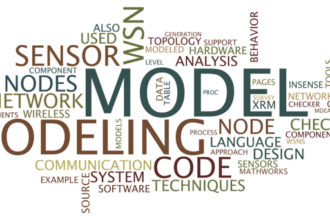 Back in the day, organizations built their IT infrastructure in distinct silos. This included separate entities for networking, storage, systems administration and software. Much of this has changed in the past few years thanks to virtualization. With tools like EMC’s VMWare, most of these silos don’t exist physically anymore but are instead virtual components that can be managed entirely through software applications.
Back in the day, organizations built their IT infrastructure in distinct silos. This included separate entities for networking, storage, systems administration and software. Much of this has changed in the past few years thanks to virtualization. With tools like EMC’s VMWare, most of these silos don’t exist physically anymore but are instead virtual components that can be managed entirely through software applications.
 Back in the day, organizations built their IT infrastructure in distinct silos. This included separate entities for networking, storage, systems administration and software. Much of this has changed in the past few years thanks to virtualization. With tools like EMC’s VMWare, most of these silos don’t exist physically anymore but are instead virtual components that can be managed entirely through software applications.
Back in the day, organizations built their IT infrastructure in distinct silos. This included separate entities for networking, storage, systems administration and software. Much of this has changed in the past few years thanks to virtualization. With tools like EMC’s VMWare, most of these silos don’t exist physically anymore but are instead virtual components that can be managed entirely through software applications.
This has given to what has come to be known as converged infrastructure. Unlike the traditional systems that work in silos, converged infrastructure systems tend to centralize the resources into a single package that services networking, storage, servers, and software through shared resources. The objective is to reduce capital expenses incurred on cabling, cooling, power and floor space and instead increase utilization rate and thereby optimize the use of resources.
While converged infrastructure systems tend to pool in resources for better utilization, they are essentially hardware-driven. What this means is that converged systems are still independent components that are simply engineered to work well together. Users can still add or remove pieces of the components from a converged infrastructure and use them elsewhere, and this is where converged infrastructure differ from hyper-converged alternatives.
Hyper-converged infrastructure systems take the pooling of resources one level higher and work as modules with each module containing components to handle storage, networking and computing resources. The advantage of this design is to make it easy to scale up or down your requirements by adding or removing these modules. The biggest advantage over converged infrastructure is not resource optimization but a reduction in administrative costs and a smaller data footprint overall.
So what does this mean to an organization looking at deploying fresh storage or server platforms? Is a hyper-converged infrastructure system right for your organization or not? To answer these questions, it is first important to understand what your end objectives with the fresh deployment are. If you are looking for a system that is relatively cheap, quicker to deploy and is highly reliable, then the module-based hyper-converged systems are quite ideal for your requirements.
The issue arises with performance. The relatively high reliability of hyper-converged systems come from the massive series of tests that are conducted on these modules to ensure interoperation and integration. This approach tends to also increase the latency in operations which essentially brings down the performance. If you are seeking a platform to carry out your big data operations, the relatively high latency on hyper-converged systems can result in performance issues and may not be an ideal setup for your needs.
Hyper-converged systems, however, come with their own set of benefits and are much sought after today. One of the biggest reasons is that it does not require businesses to replace their existing infrastructure. The hyper-converged modules can easily sit beside existing systems and can work seamlessly with the active environment. It is hence very useful when you want to make a smooth, non-disruptive transformation to a modern infrastructure setup. Not just that, hyper-converged systems are extremely beneficial for organizations looking to deploy Virtual Desktop Infrastructure (VDI) systems or for managing their sites remotely through a unified management system. But most importantly, hyper-converged systems help remove the complexities around setting new environments and are best suited for enterprises looking to quickly build test environments for development or want to manage backup and recovery with minimal resources.










